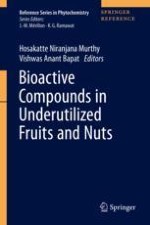2020 | OriginalPaper | Buchkapitel
29. Bioactive Compounds of Salacia chinensis L.
verfasst von : Shrikant M. Patil, Parthraj R. Kshirsagar
Erschienen in: Bioactive Compounds in Underutilized Fruits and Nuts
Aktivieren Sie unsere intelligente Suche, um passende Fachinhalte oder Patente zu finden.
Wählen Sie Textabschnitte aus um mit Künstlicher Intelligenz passenden Patente zu finden. powered by
Markieren Sie Textabschnitte, um KI-gestützt weitere passende Inhalte zu finden. powered by
